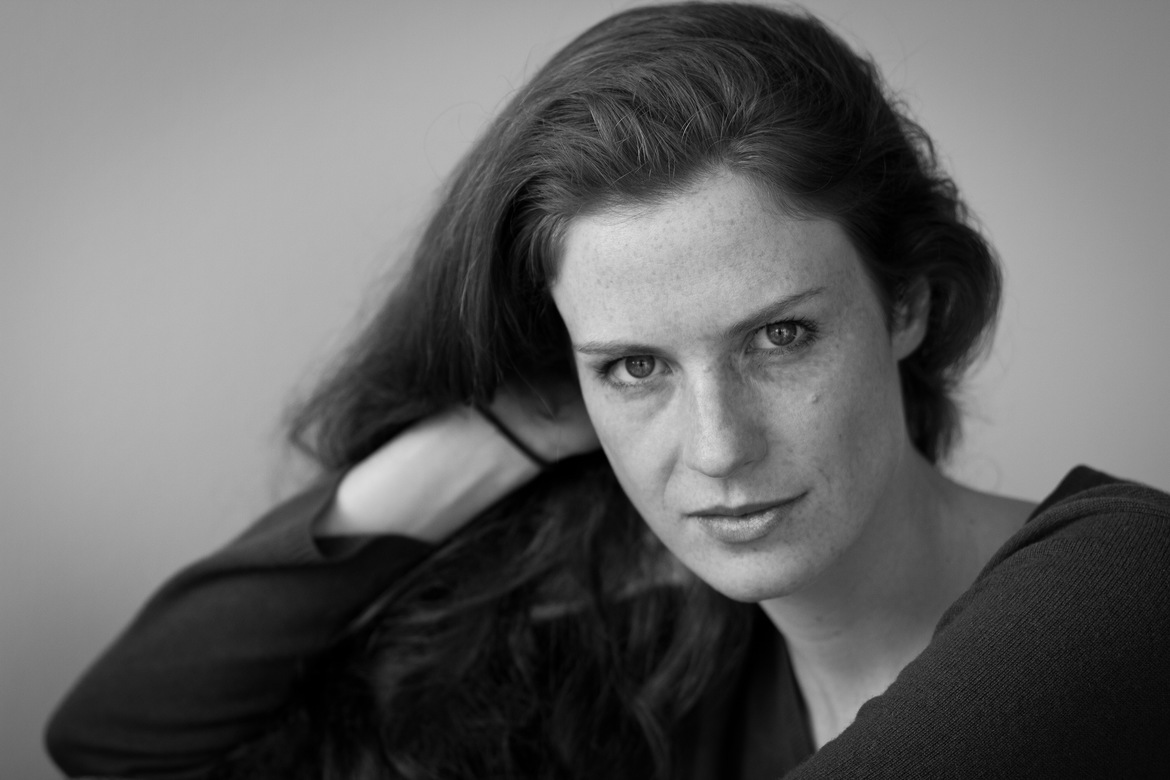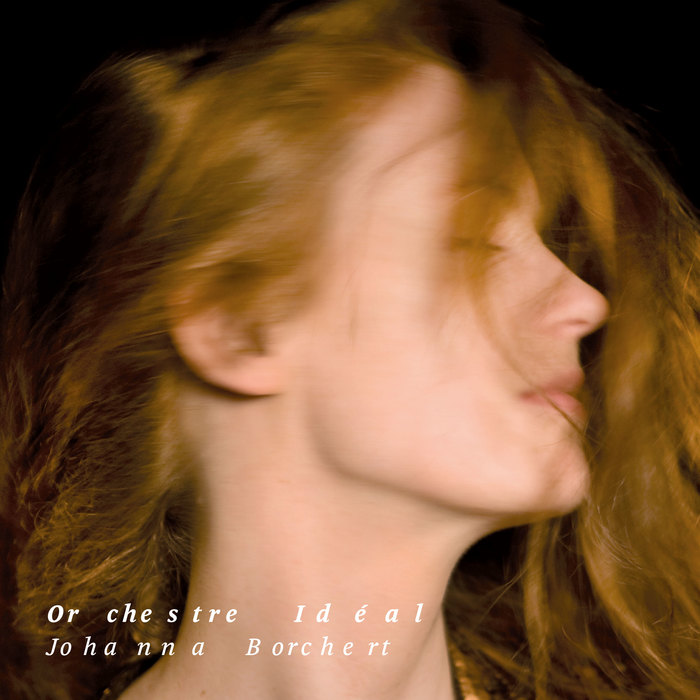Schon als Kind zeichnete sich Johanna Borcherts eigenwillige und in die musikalische Freiheit ausbrechende Musikerpersönlichkeit ab. Soll sie heute ihre Inspirationsquellen nennen, so tauchen irgendwo in einer langen Reihe prägender Musikmomente Meilensteine auf wie Bach, Monk, Shorter, Messiaen, Cage, Ligeti oder auch Aufenthalte in Californien, Mills College in Zusammenarbeit mit Fred Frith und Chris Brown oder 2007 in Chennai, Indien mit dem Studium klassischer indischer Musik. Nach Jazzklavier- und Kompositionsstudium an der Universität der Künste Berlin und dem „Rytmisk Musikkonservatorium“ in Kopenhagen, wo sie u.a. bei David Friedman, Hubert Nuss und Django Bates Unterricht hatte, ist sie heute in beiden Hauptstädten eine der antreibenden Kräften der jungen Jazz- und Avantgardeszene. Bekannt ist sie vor allem durch ihre Bands Schneeweiss & Rosenrot und Little Red Suitcase, mit denen sie bisher in vielen Ländern Europas wie auch in Asien und den USA tourte. Seit 2010 tritt Johanna Borchert mit ihrem Soloprogramm nicht nur als Pianistin und Komponistin sondern auch als Sängerin in Erscheinung.
Veröffentlichung
Orchestre Idéal
Johanna Borchert Solo
2012 WhyPlayJazz
(RS008)
CD + MP3 Album Download
Konzerte
Sie sind Veranstalter und möchten Johanna Borchert Solo für ein Konzert oder Festival buchen? Verfügbarkeit: auf Anfrage.
Töne/Bilder/Videos
Reviews
Although mostly spontaneously improvised this music has very little if anything to do with Improvised Music as in the avant-garde Jazz idiom and is deeply rooted in contemporary Classical music, mainly in the vicinity of the French modernists like Claude Debussy, Eric Satie, Oliver Messiaen and others. Some of these pieces are minimalist, others more developed, but the overall atmosphere is predominantly characterized by the sonorities typical of these composers and their particular approach to music.
The music is mostly very delicate and introvert, which makes it quite difficult for most of the listeners, who have little experience with such demanding and ambitious ventures. Therefore this music might work well when played live but listening to it at home might prove to be over the top for most people.
Of course one must support artists willing to take risks and statements like this one are always a sign of the intellect overcoming the musical futility that overwhelmingly surrounds us. Sadly I´m probably one of very few people who really like this music, as it unfortunately falls in between; the Jazz oriented people will find it to romantic and the Classical buffs to bold.
So ye brave-hearted embrace this little gem wholeheartedly and others, please investigate other recordings by Borchert, which are surely of the same quality but probably slightly more accessible.
German pianist Johanna Borchert extracts the essence of the orchestra from her piano, harpsichord and autoharp over the course of 13 short tracks on Orchestre Idéal. [...] she makes extensive use of preparations but to very different ends. At times, such as on the tolling “Obertöne”, she evokes minimalism, provoking contemporary classical comparisons. Elsewhere she summons Erik Satie, especially on the dreamy “Lillies”. The latter is one of four pieces improvised on her own compositions, more lyrical than the unpremeditated cuts. In her explorations of texture, layers and moods, several events often happen simultaneously, such as the pointillist plucked notes and dramatic piano sweep of “Königlicher Schlafgang” or the ghostly ape-like hoots, percussive taps and isolated keystrokes that comprise “Gemolkene Stäbchen”. Many of the pieces are left hanging and this, combined with the general austerity of conception, means that a similarly unresolved air hangs over the album as a whole.
13 teils frei improvisierte Stücke sind dabei entstanden, die den Blick lenken auf den kreativen Kosmos der Pianistin: mit seinen sanft hingetupften Akkorden, mit seiner breiten Dynamik von ganz leise bis ganz laut, mit repetierenden Phrasen und an Minimal Music erinnernde Sequenzen. Zusätzlich hat Borchert den Flügel präpariert und spielt auch noch die Zither-ähnliche Autoharp und das Cembalo, um ihr Klangspektrum zu erweitern und eine noch tiefer gehende Ausdrucksmöglichkeit zu haben.
Wie ein windiger Regen breiten sich die gefühlvoll gesetzten Töne des Openers, der „Ouverture“ auf „Orchestre Idéal“ in den Gehörgängen des Hörers aus. Sie lassen dabei alles Folgende offen. Noch könnte man in alle Richtungen gehen: ein eingängiges Pianoalbum oder schwergängige Kunstmusik zum Selbstzweck – alles ist möglich. Ein Spannungsbogen, der oben genanntes Ohr etwas aufmerksamer werden lässt. Was dann in den 12 weiteren Stücken folgt, ist Johanna Borcherts Idee vom idealen Orchester, man könnte aber auch sagen – ein Soloalbum mit Hilfsmitteln. Dabei streift man während Stücken wie „Zitterpartie“ oder „der königliche Schlafgang“ durch das beeindruckende musikalische Repertoire der Pianistin zwischen asiatischen Geräuschkulissen, impressionistisch repetitiven Läufen oder auch nachdenklich sich ausbreitenden Klangflächen wie auf „Til Petter og Anton“, das mit einer skandinavischem Erzählstruktur in den Bann zieht. „Extrasystolen“ steigert sich in seiner abstrakten Rhythmik bis zum dramatischen Flattern – welches dann abrupt endet. Die Stücke auf „Orchestre Idéal“ sind frei improvisiert und zeugen von ebensolcher Begabung. In Ruhe und Aufmerksamkeit gehört, vermag das Album in verheißungsvolle klangliche Räume zu entführen.
Dieses Album geht zurück auf die Entdeckung „einer kleinen Musikmaschine, in der, wenn man den Deckel aufklappte, kleine Zinnmännchen und Zahnrädchen Musik hervorbrachten“, erklärt Johanna Borchert. Die Aufschrift der Kiste, in die das Maschinchen verpackt war, lautete, „Orchestre Idéal”. Für Johanna Borchert stand fest, dass auch ihr Instrument, das Klavier, letztendlich von den Klängen eines ganzen Orchesters bewohnt werden könnte- und auch der CD-Titel war hiermit quasi vorgegeben. Auf „Orchestre Idéal” widmet sich die Pianistin nun der vollkommen freien Spiel und der Improvisation über einige ihrer Kompositionen. Ausschließlich Johanna Borchert an verschiedenen Tasteninstrumenten ist zu hören – am präparierten und nicht präparierten Klavier, am Spinett und an der Autoharp. Mit, „Orchestre Idéal” bewegt Borchert sich abseits eingetretener Pfade, tritt gelegentlich dicht an den Rand des möglich Scheinenden, bleibt aber immer in ihrer selbst vorgegebenen Spur. „Orchestre Idéal” ist nicht Jazz und auch nicht Neue Musik, sondern ein Gemisch, das sich Ausreißer und Experimente gestattet. Stets geleitet von der Neugier am Spiel mit Klang und Zeit.
The material put on the record refers to a contemporary music of Eric Satie, György Ligeti, piano preparations and polyrhythmic elements evoke associations with John Cage, Benoit Delbecq. Her prepared piano sometimes tickles gently like gongs in Indonesian gamelan.
The music has an illustrative potential, strings are sometimes launched and climbing like a violin in a fond crescendo, sometimes shaking, reminds glissandos of steel or electric guitar on which Johanna might be working with bowls and sticks like maestro Fred Frith himself.
Johanna Borchert is the orchestra, Orchestre Idéal - she has proven that she can become a self-contained, one-person orchestra of an exceptional technique, imagination, sense of melody and color, so we should keep an eye and ears on her further releases and the development of her unusual musical personality.
The orchestrated and seemingly-avant-garde approach to music-making is relatively evident throughout Johanna Borchert’s newest release, Orchestre Ideal. The thirteen instrumental tracks feature the music of free jazz, improvisation, avant-garde, and neo-classical genres with a slight Scandinavian or European backbone. The piano and autoharp are featured instruments on the album.
Johanna Borchert is not a typical neo-classical or jazz composer. In fact, Johanna takes classical idioms and melds jazz, avant-garde and improvisational music with inventive song structures that are futuristic, but not electronic. This is not a dance music album or pop music release. Some of the songs are languid without much direction. The lack of vocals does not detract from the instrumental impact of the songs. Some of the arrangements are a bit abrasive with the frenzied musical displays. Still, fans of music with an ear for varied instrumental tones and textures are going to be most satisfied.
Rating: 4 Stars (out of 5)
Ähnlich wie Erik Satie versteht es Johanna Borchert, die bis auf wenige Ausnahmen nur Improvisationen spielt, zauberhafte Stimmungen zu kreieren. Durch experimentelle Bearbeitung ihres Instruments schafft es jedes Stück, eine eigene Note zu verzeichnen und von neuem zu interessieren - wenn auch fernab von jedem Pop- oder Songkontext. Ein abenteuerlicher Ritt durch eine kreative Künstlerseele.
Johanna Borcherts reiche musikalische Ideenwelt, umrahmt von ihrem inneren, feinen Gespür für gut artikulierte Strukturen, ist eine Gabe die viele 'klassische', nicht nur angehende, Komponisten sich wünschen würden. Eine extraordinäre 'real-time'-Komponistin.
It is not that often that a solo piano recording deeply bewitches, sonically speaking, the speakers or headphones you're listening on, and therefore, musically speaking, the emotion of the listener. As well as it takes a huge batch of musicianship, of daring and spirit to achieve such a musical project.
Johanna Brochert has built a world of her own, a music of today, and has assembled here a series of free-minded improvisations that let appear sorts of territorial constraints or conceptual tool-boxes, may they be melodic or harmonic, or both, polyrythmic, mood, drama or timber based... As a prolongation of the secular piano, Miss Brochert uses various means to change its timbre such as preparations of wood or metal (prolongating Mr John Cage's marvels on his 100th birthday!) that she places between strings, as well as a subtile use of the zyther or few piano overdubs, that recalls some electronics effects of today although played within a "bio" approach to sound crafting.
As if in Tarkovki's masterpiece film "Stalker", Miss Brochert plays like she'd throw a sacred stone and then would dance towards it in a direction she'd discover whilst dancing, catching fresh ideas passing by a tree or a bird call, allowing herself sudden circles or flipping direction suddenly... this done with seemingly reseted ears for each step, according to her own ear attitude and altitude, inviting the listener in a fulfilling and emotional dive. May there be some recalls of whoever and of whatever slice of musical history (one could play a clue game here), the fascinating dice-thrown-like musical sensations given by Miss Brochert are vivid, creative, and, most important, at the highest peak of aesthetically pertinence and surprise.
Mit einem Orchester en miniature durchstreift Johanna Borchert in ihrem Debütalbum „Orchestre Idéal“ musikalische Landschaften unterschiedlicher Couleur. Die Pianistin der Formation Schneeweiss und Rosenrot widmet sich hier dem solistischen Klavierspiel. Zwischen Jazz, Neuer Musik oder indischen Einflüssen changieren, schweben, verflüchtigen sich Architekturen aus Klang und bewegen sich zwischen Geschmeidigkeit und Widerspenstigkeit. Dabei bedient sich Johanna Borchert sowohl des natürlichen Klavierklangs, wie auch des präparierten Klaviers oder sie wählt das Cembalo, um ihren autarken Klangkosmos auszudehnen.
Die Stücke leben von Reduktion und machen trotzdem satt. Oft entwickeln sie sich aus einer großen Ruhe, geraten dann eigenartig kryptisch, kehren zu ihrem harmonischen Kern zurück oder blähen sich weiter fauchend auf. Die Klangfarben sind stets passend gewählt und verleihen der Musik das jeweils nötige Kolorit. Die Eigenwilligkeit und berückende Klarheit ihres Spiels malen traumwandlerische Bilder. Johanna Borchert kann im Alleingang völlig überzeugen.
Eigene Töne, nun dem Hörer anvertraut.

